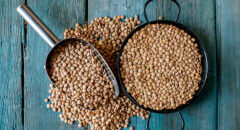
We all know how hard it can be to resist unhealthy food. With its delicious taste, it’s no wonder why so many of us give in to temptation and indulge in sugary or fatty treats. But did you know that with a few simple tweaks, you can make unhealthy food healthier?
From reducing fat and sugar content, and using healthy substitutes for ingredients, to other tips, which will help make your favorite dishes much healthier without sacrificing flavor – there are plenty of ways to enjoy the same delectable meals but with a much healthier twist. In this article, we’ll discuss 7 different methods for making your favorite foods more nutritious.
1. Reduce Fat and Sugar Content
One of the most effective ways to make unhealthy food healthier is to reduce its fat and sugar content.
This can be done by cutting back on added butter, oil or margarine when cooking, as well as reducing the amount of sugar used in recipes. By taking these two simple steps, you can greatly reduce your calorie intake.
2. Use Healthy Ingredient Substitutes
Using healthy ingredient substitutes is another good way to cut back on bad food. Instead of adding more unhealthy ingredients, try substituting them with better alternatives.
For example, you can use applesauce in baking recipes. Applesauce contains only 30 calories per tablespoon compared to the 102 calories found in butter.
RELATED: 3 Easy Swaps for a Healthier Heart
3. Try Baking Instead of Frying
Frying is a popular and delicious way to cook food, but it can be unhealthy as it usually involves submerging the food in oil. Baking, on the other hand, is a much healthier alternative as there is no additional fat or oil required.
Baking does not require any special skills or equipment; you just need your oven and a few essential ingredients. You can also get creative with your baking by adding herbs or spices to give the food a unique flavor.
4. Add More Vegetables to Your Dishes
Adding more vegetables to your dishes is a surefire way to make sure you don’t overeat. Not only are they packed with essential vitamins and minerals, but they can also increase the overall nutritional value of a meal by providing additional dietary fiber and protein.
In addition, the added volume of vegetables helps fill you up faster, which means you’ll consume fewer calories overall. Try adding








